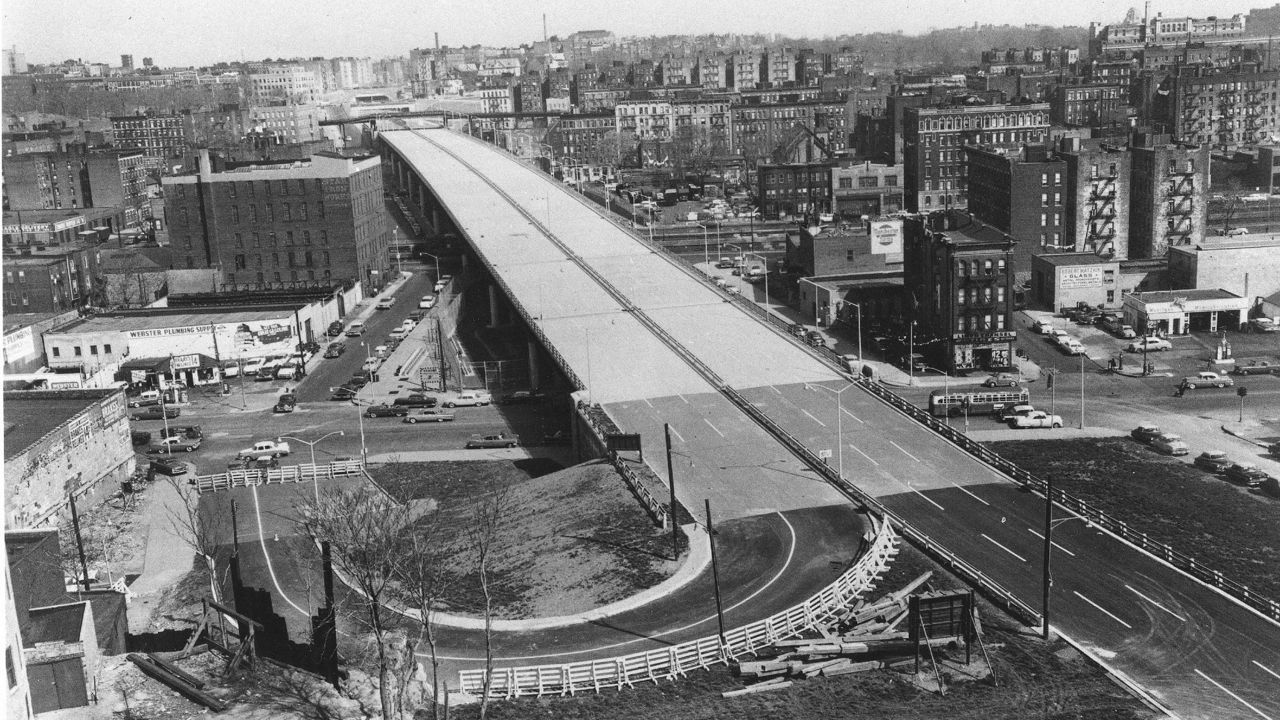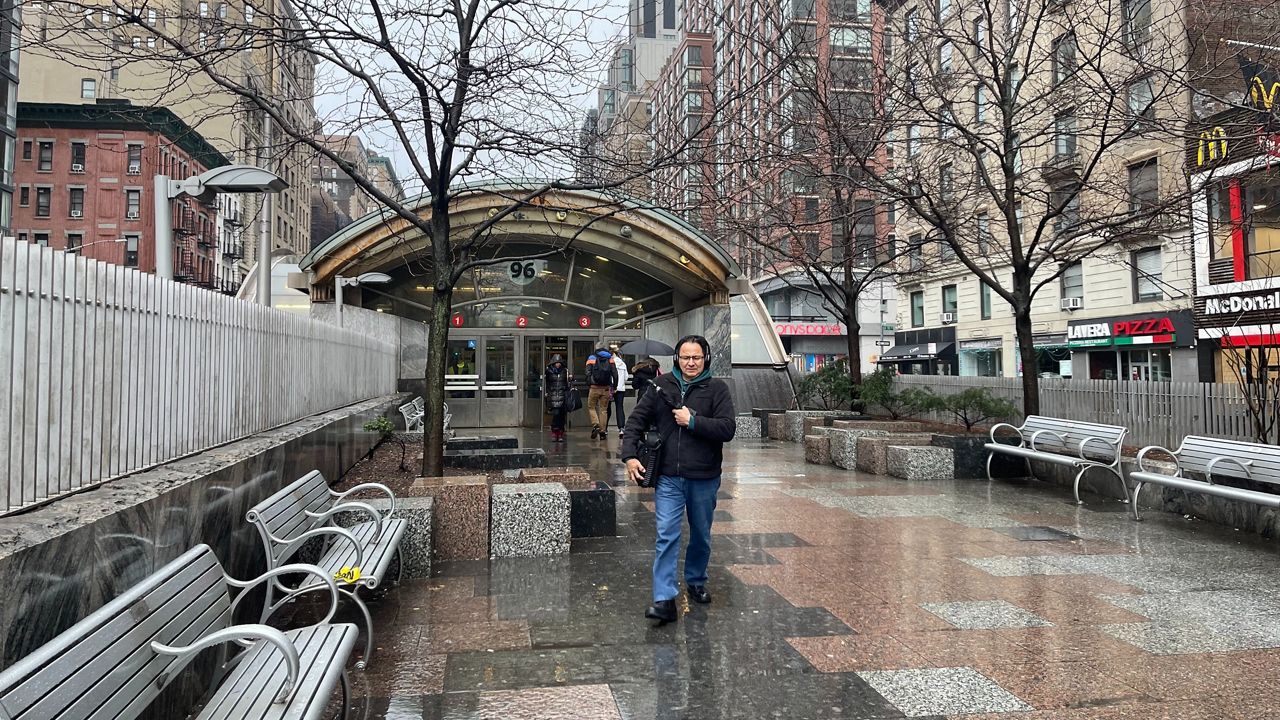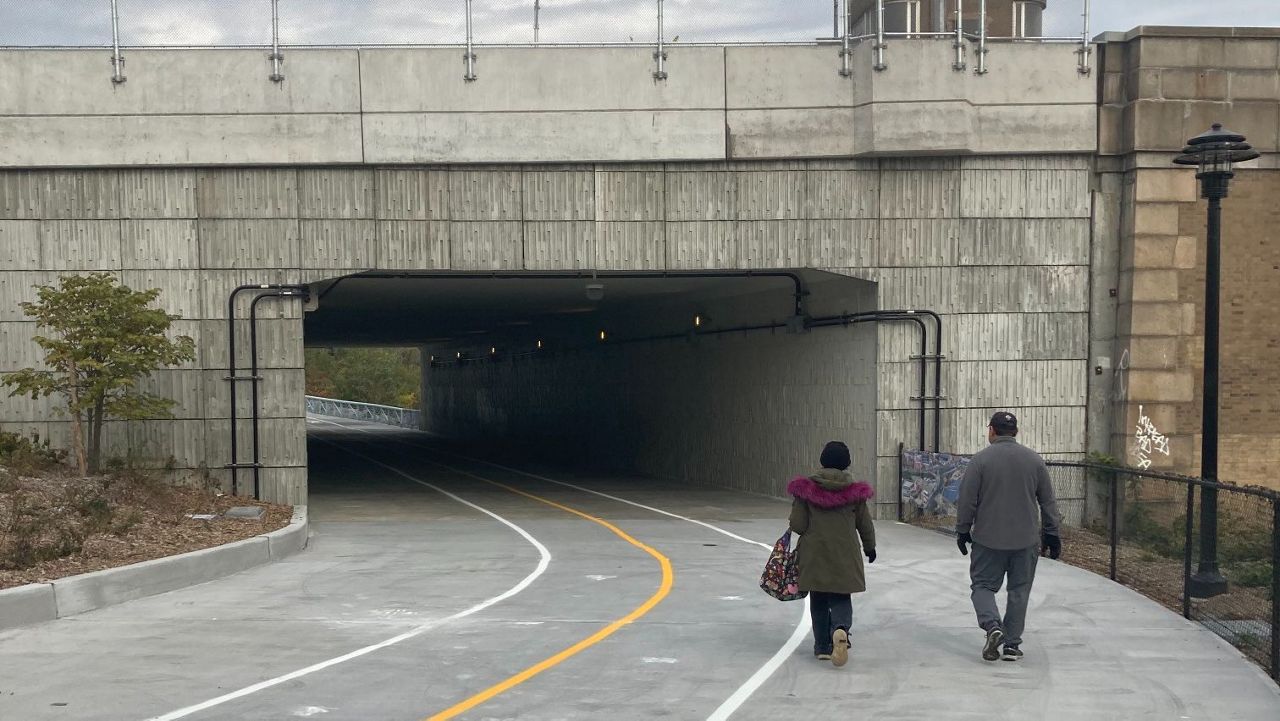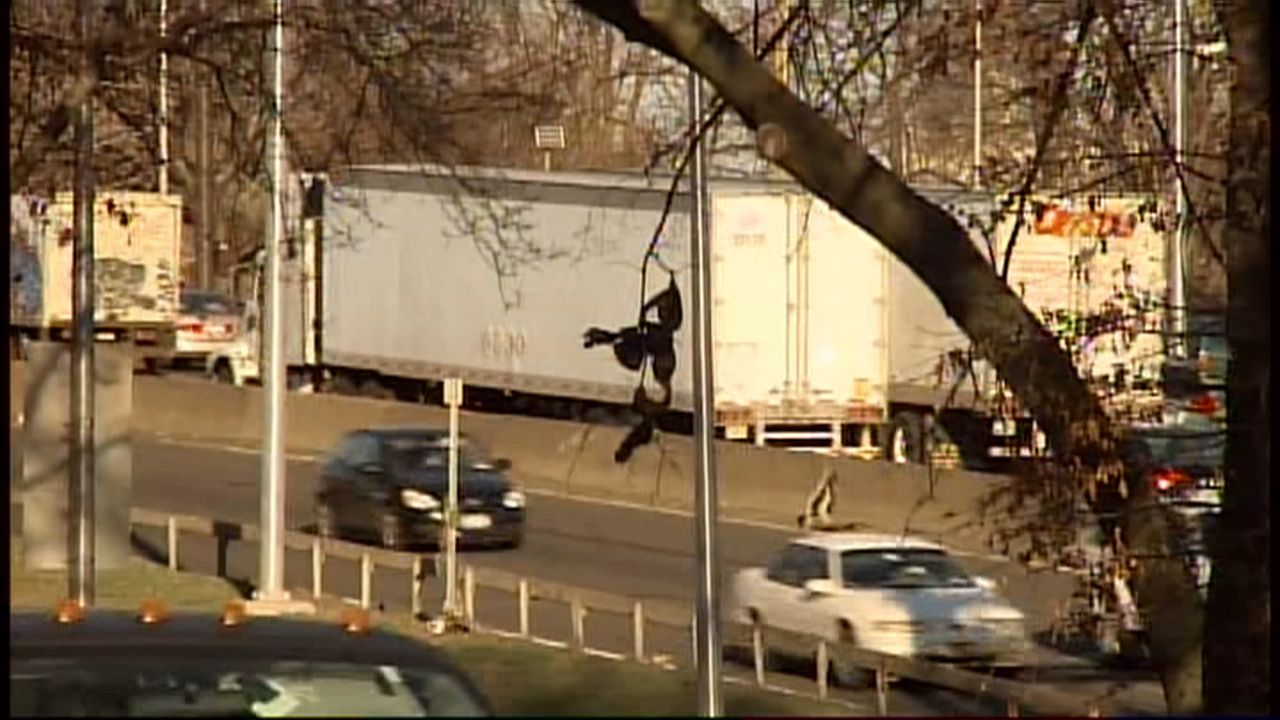When Robert Moses devised a plan to construct the Cross Bronx Expressway in the 1940s, the controversial urban planner set a project in motion that would end up dividing neighborhoods and displacing thousands of residents.
In the decades since, “toxic fumes” from the expressway have contributed to high rates of illnesses including asthma, noise pollution has disrupted residents’ sleep, and the highway itself has seen high crash rates, Mayor Eric Adams said at a news conference Monday morning.
A “historic” study the city and state are set to conduct with a $2 million grant from the U.S. Department of Transportation will aim to “push back on what Robert Moses did,” Adams said.
What You Need To Know
- A “historic” study the city and state are set to conduct with a $2 million grant from the U.S. Department of Transportation will focus on mitigating the damage the Cross Bronx Expressway has done to the Bronx, Mayor Eric Adams said Monday
- “Toxic fumes” from the expressway have contributed to high rates of illnesses including asthma in the Bronx, noise pollution has disrupted residents’ sleep, and the highway itself has seen high crash rates, Adams said
- The study will focus on reducing pollution, addressing health disparities, reconnecting neighborhoods, improving traffic safety and creating new green spaces, the mayor said
The study will focus on reducing pollution, addressing health disparities, reconnecting neighborhoods, improving traffic safety and creating new green spaces, the mayor said.
“[The Cross Bronx] was one of the many expressways constructed through a combination of racism and a brutal lack of concern,” he said. “The construction of the Cross Bronx turned bustling streets into ghost towns.”
“It was not like there was not a vibrant community prior to the building of the Cross Bronx,” he added. “What it did, it gutted and devastated those communities.”
With money from the grant, city and state officials will work with Bronx residents and community groups to create a plan aimed at mitigating the damage the expressway has done to the borough, Adams said in a press release.
Officials will hold the first of several community meetings centered around the corridor this coming February, according to the release.
By 2024, they will be able to present a plan that “includes both near- and long-term project proposals to improve neighborhood conditions around the Cross-Bronx,” the release said.
The study will examine the possibility of “capping” swaths of the expressway, or building decks over them, Adams noted — a measure that activists have long sought.
“I wish we could go back in time to stop the Cross Bronx when it was built. But the second best time to fight a wrong is today,” Adams said. “Today, we’re beginning the process of reimagining the entire Cross Bronx corridor.”
“From the Harlem River to the Hutchinson River Parkway, this process is about more than just physical infrastructure,” he added. “It’s about envisioning an equitable, prosperous, healthy and safe Bronx for generations to come.”







